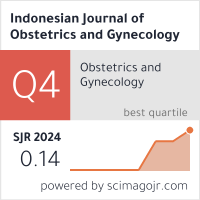Precision of Ultrasound During Peripartum for Predicting and Diagnosing Obstetric Anal Sphincter injuries
Abstract
Abstract
Objectives: To assess the accuracy of transperineal ultrasound (TPUS) in diagnosing obstetric anal sphincter injuries (OASIs) in primiparous women between 37 and 41 weeks of gestation.
Design: Cohort observational study.
Setting: Kasr Alainy Hospital, Cairo University.
Subjects: 697 nulliparous women with singleton pregnancies between 37 and 41 weeks' gestation.
Outcome Measures: Ano-vaginal distance (AVD), body mass index (BMI), fetal parameters (biparietal diameter [BPD], head circumference [HC]), and anal sphincter contraction.
Results: Significant differences were found between women with and without OASIs in BMI, fetal parameters, and AVD. The AVD's area under the ROC curve (AUC) was 0.659, showing moderate predictive value for OASIs. Multivariate analysis revealed that AVD and second-stage labor duration were the strongest predictors of OASIs.
Conclusions: TPUS is a valuable tool in identifying women at risk of OASIs and may improve detection when combined with clinical examination.
Keywords: Obstetric Anal Sphincter Injuries (OASIs), Transperineal Ultrasound (TPUS), Ano-Vaginal Distance (AVD), Vaginal Delivery, Primiparous Women, Diagnostic Accuracy.
Downloads
Copyright (c) 2025 Indonesian Journal of Obstetrics and Gynecology

This work is licensed under a Creative Commons Attribution-NonCommercial-ShareAlike 4.0 International License.













